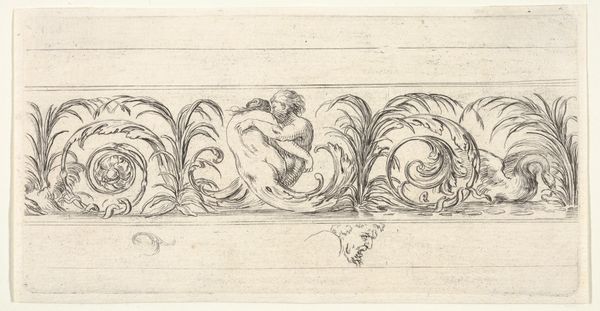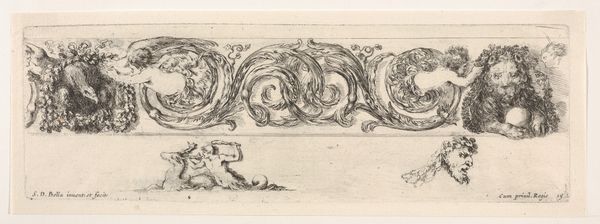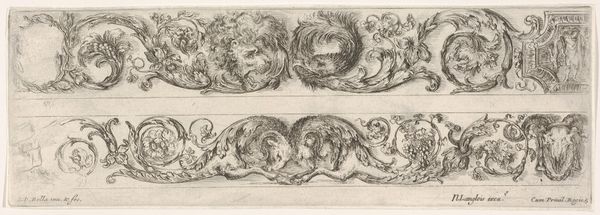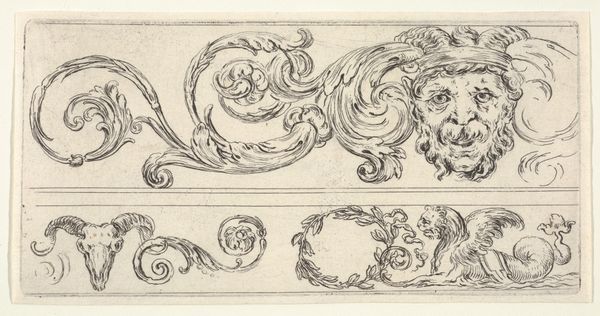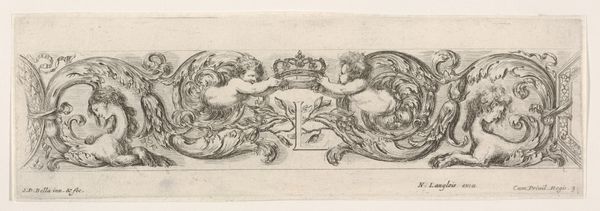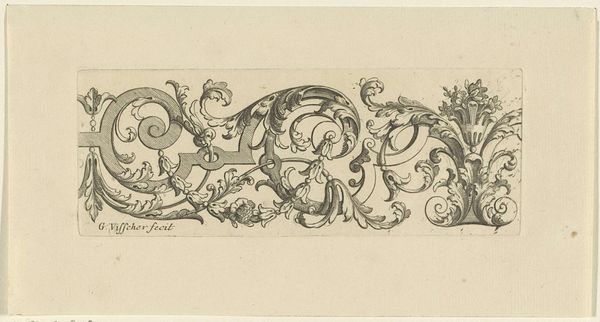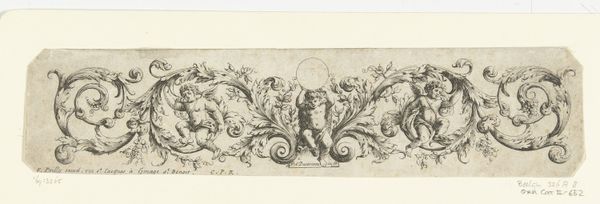
Design for Two Friezes, the One on Top containing a Zephyr flanked by Lions, Plate 14 from: 'Decorative friezes and foliage' (Ornamenti di fregi e fogliami) 1645 - 1650
0:00
0:00
drawing, print, engraving
#
drawing
#
ink drawing
#
baroque
#
pen drawing
#
face
# print
#
pen illustration
#
pen sketch
#
pencil sketch
#
ink drawing experimentation
#
pen-ink sketch
#
line
#
pen work
#
sketchbook drawing
#
sketchbook art
#
engraving
Dimensions: Sheet: 3 9/16 × 9 13/16 in. (9.1 × 25 cm)
Copyright: Public Domain
Curator: This delicately rendered print is entitled "Design for Two Friezes," conceived by Stefano della Bella around 1645-1650. Editor: My first impression is one of dreamlike serenity. The scrolling foliage and softly rendered figures evoke a tranquil and imaginative realm. Curator: Precisely! It speaks to the enduring human desire for harmony, beauty, and an escape from earthly concerns. The composition, divided into two registers, presents a symbolic language rooted in Baroque sensibilities. The upper section features a zephyr flanked by lions, classical symbols. Editor: Indeed, the cherubic figure of the zephyr resonates with divine associations. Zephyrs are symbolic for their benevolence. Curator: These decorative friezes existed in a tumultuous era, one marked by intense power struggles and religious conflicts. Understanding this context helps us appreciate the artist's choice to focus on timeless motifs. The print suggests a yearning for a utopian ideal—a world governed by reason, order, and perhaps, even, the divine. Editor: Observe how della Bella employs the lions: majestic creatures embodying strength and courage. Placing them in support of a Zephyr brings a delicate balance between power and grace. This print reflects an appreciation of emblems meant to speak of virtuous leadership, or moral principles in daily life. Curator: Exactly, it's crucial to remember the Baroque period wasn't solely about grand spectacle. Artists like della Bella engaged with philosophy, exploring ideas of justice, and their expressions take form through complex visual languages. Editor: Examining the cultural roots reveals how classical and mythological subjects remain powerfully relevant for contemporary art, addressing timeless questions about humanity, social ideals, and justice. It’s fascinating to see these themes subtly revisited. Curator: I find myself moved by the enduring power of art to serve as a site of reflection and questioning in our tumultuous modern world. Editor: And I am left contemplating how this vision of equilibrium continues to ripple across time through repeated visual and philosophical explorations.
Comments
No comments
Be the first to comment and join the conversation on the ultimate creative platform.
